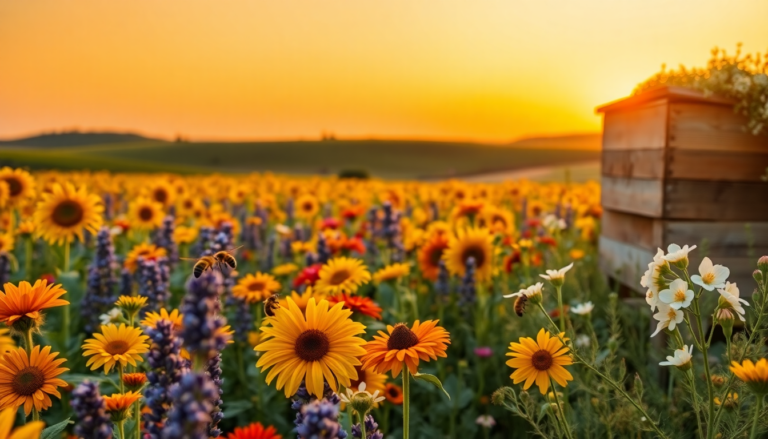Argomenti trattati
Bees are more than just buzzing insects; they play a vital role in our ecosystems and food supply. Have you ever stopped to think about how crucial these remarkable pollinators are? Recent studies tell us that bees are responsible for pollinating about one-third of the food we consume. That’s right—without them, many of our favorite foods, from almonds to zucchini, could become increasingly scarce, threatening both biodiversity and food security.
The Impact of Bees on Our Food Systems
The United States Department of Agriculture (USDA) has highlighted the critical role bees play in our food systems. They help reproduce fruits, vegetables, nuts, and seeds, all essential for a balanced diet. Imagine a world without the vibrant variety of food we enjoy today—without bees, not only would our food choices dwindle, but prices for the remaining products could skyrocket. It’s easy to take for granted the intricate web of pollination that allows us to savor a diverse range of foods, but the truth is, bees are at the heart of this process.
Moreover, the decline in bee populations poses a significant threat to global food security. Factors like habitat loss, pesticide use, and climate change have led to a worrying drop in bee numbers. As caretakers of our environment, we must take decisive steps to support and protect these vital pollinators. One simple way to start is by planting bee-friendly flora that provides nourishment and habitat for these hardworking insects.
Creating a Bee-Friendly Garden
So, how can you make a difference? One of the most effective ways to support bee populations is by cultivating a garden filled with flowers that attract them. Whether you have a sprawling garden or a cozy balcony, there are numerous plants you can incorporate to create a welcoming haven for bees. When choosing flowers, it’s smart to select varieties that bloom at different times throughout the season to ensure a continuous food source.
For example, asters are a fantastic choice because they provide pollen and nectar well into the fall months. This is crucial, especially since bees stay active even as temperatures drop. Another excellent option is bee balm, known for its vibrant blossoms that can come in shades of pink, purple, and red. This perennial flourishes from mid-summer to early fall, delivering sustenance to bees during their peak activity periods.
Don’t forget about black-eyed Susans! These sturdy flowers thrive in sunny conditions and feature nectar-rich centers that attract not only bees but also goldfinches, making them a delightful addition to any garden. Similarly, goldenrod, with its bright yellow flowers, serves as a valuable late-summer food source for bees as they prepare for the colder months.
Additional Flowers to Consider
In addition to the flowers mentioned above, honeysuckles are a popular garden choice thanks to their fragrant blooms and ability to attract bees. These climbing plants can be trained to grow on trellises or fences, adding both beauty and functionality to your garden. Lavender, famous for its soothing aroma, is another excellent addition that not only draws bees but also enhances the sensory experience of your outdoor space.
Other noteworthy flowers include lilacs, snapdragons, and sunflowers. Lilacs offer a sweet fragrance in the spring, enticing both bees and butterflies. Snapdragons provide nourishment for bees during cooler months, while sunflowers, with their cheerful appearance and abundant pollen, create a welcoming environment for pollinators. Their flat petals also serve as a resting place for bees, making them an excellent addition to any garden.
By implementing these strategies and planting bee-friendly flowers, we can contribute to the well-being of bee populations and support the health of our ecosystems and food systems. Every small action counts, and together, we can make a significant impact on the survival of these indispensable pollinators. So, are you ready to create a buzz in your garden?

